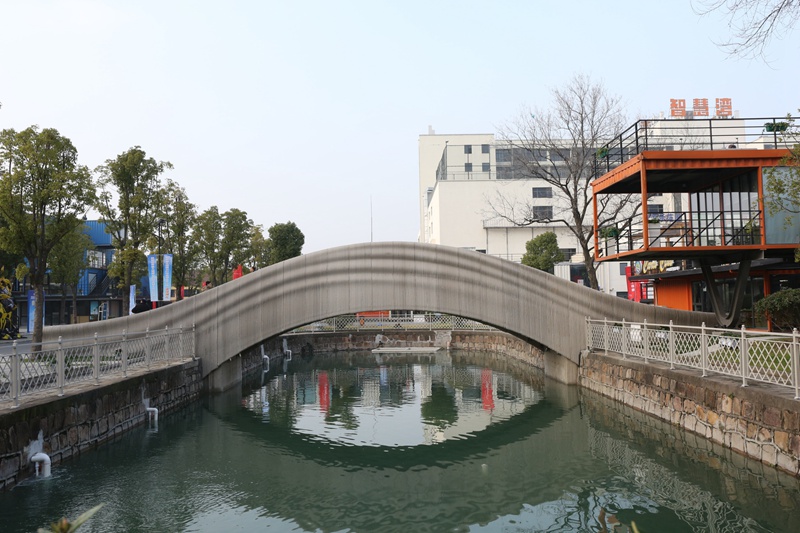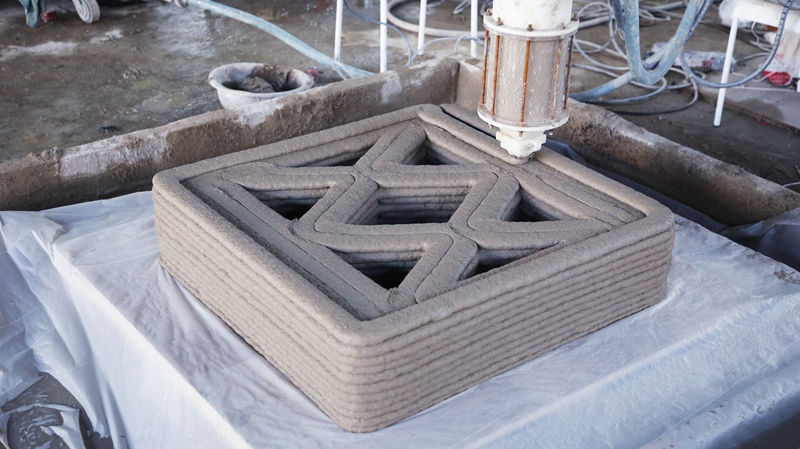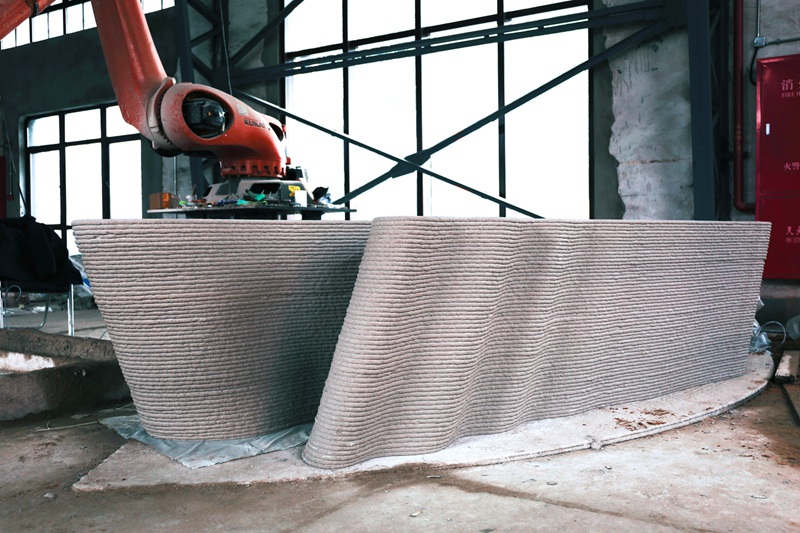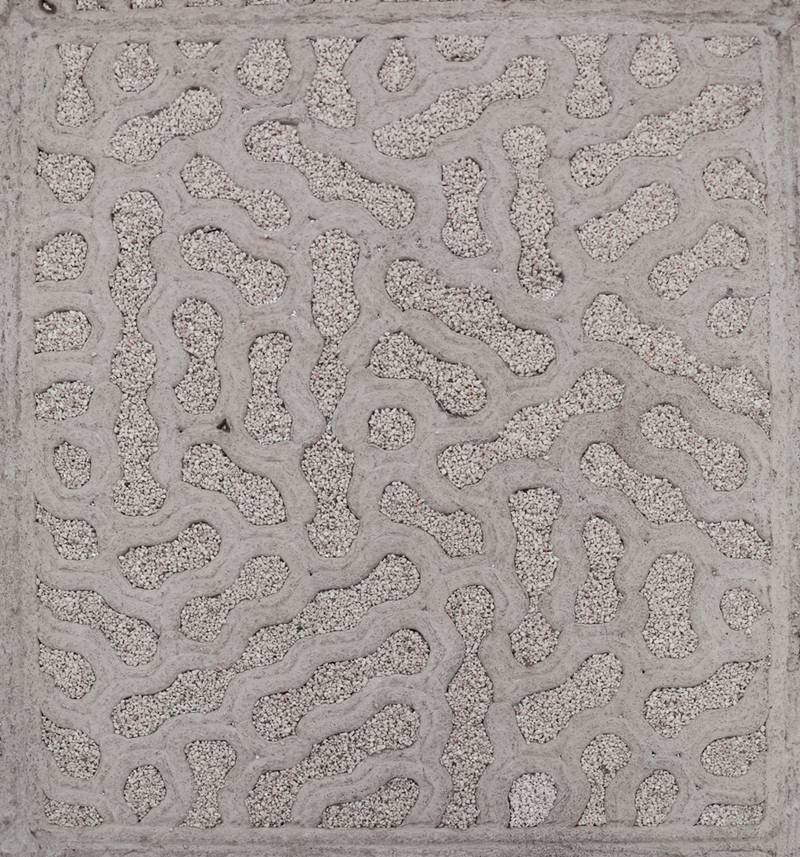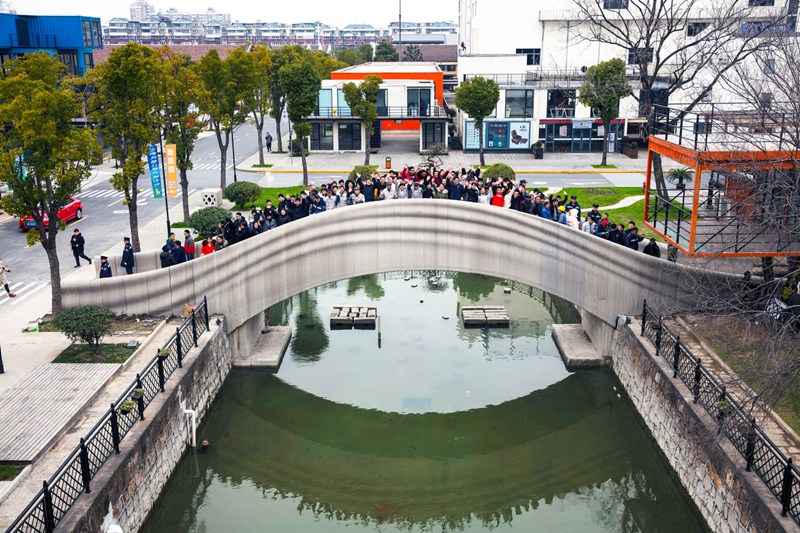(World’s Longest 3D-Printed Concrete Bridge Opens in Shanghai, China)
Image Credit: Tsinghua University
Don’t let the humble appearance of this new concrete footbridge fool you. As a matter of fact, it’s kind of a big deal, now being the longest 3D-printed pedestrian bridge in the world.
The 26.3m (approx. 86 foot) long footbridge, which stretches over a canal in Shanghai’s Baoshan District, was built by a team led by professor Xu Weiguo at the Tsinghua University School of Architecture in Beijing, integrating digital design, smart technology, cost efficiency, and architectural dynamism. While this bridge is cutting-edge, the team says its design was inspired by the 1,400-year-old Anji Bridge, which is the oldest standing bridge in China.
The 3.6m (approx. 12 foot) wide footbridge was designed by the School of Architecture’s Zoina Land Joint Research Center for Digital Architecture (JCDA), and jointly constructed by Shanghai Wisdom Bay Investment Management Company. The single-arch structure was constructed from 176 concrete units that were 3D-printed by two robotic-arms, a process that took just 450 hours split between the two limbs.
The structure consists of 44 hollowed-out concrete units, while the deck is constructed from 68 pavement units made in “the form of brain corals” filled with white pebbles, and the handrails are made from a further 64 pieces. The bridge’s components are printed from composite materials, containing polyethylene fibre concrete and admixtures to meet the structural performance of conventional materials.
Constructing the bridge from pre-printed sections was not only time-saving, but also money-saving. According to the team, the streamlined process is estimated to have produced savings of 33% when compared to more traditional construction methods – attributed mainly to the elimination of templates and reinforcing bars. Though based on an ancient arched form, the JCDA believes that the bridge marks a gratifying step towards the emerging technology being applied more regularly in real-world engineering projects.
Moreover, the bridge is embedded with a real-time monitoring system which records data on vibrating wire stresses and strains. This information will be utilized to further help understand the structural properties of 3D-printed components and develop the use of 3D printing for engineering.
According to Tsinghua University’s press release, “The completion of the pedestrian bridge marks a gratifying step for this technology from research and development to practical engineering applications”. We’re certain that the application of 3D printing in architecture and engineering will continue to grow.
Post time: Mar-19-2019

